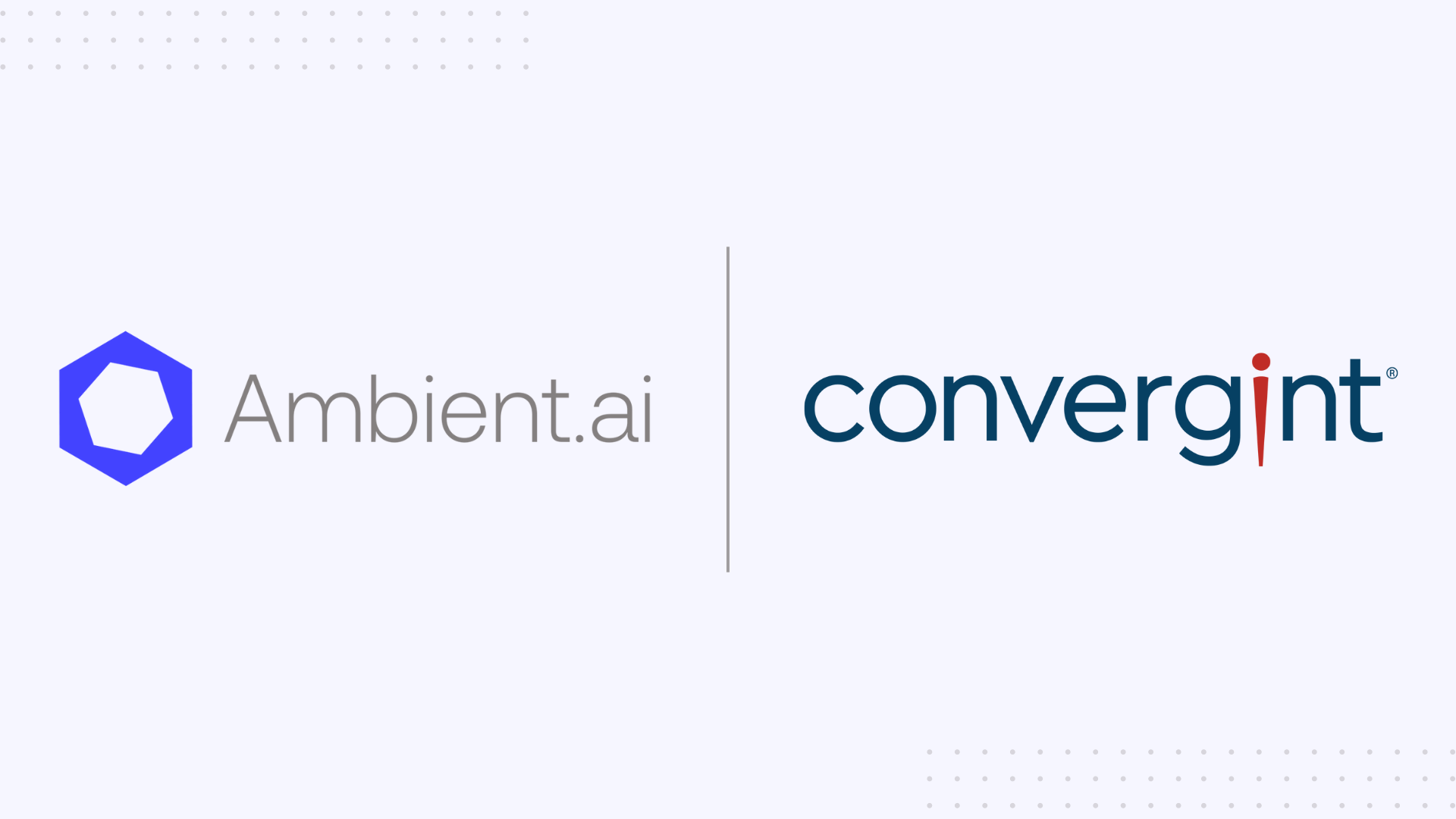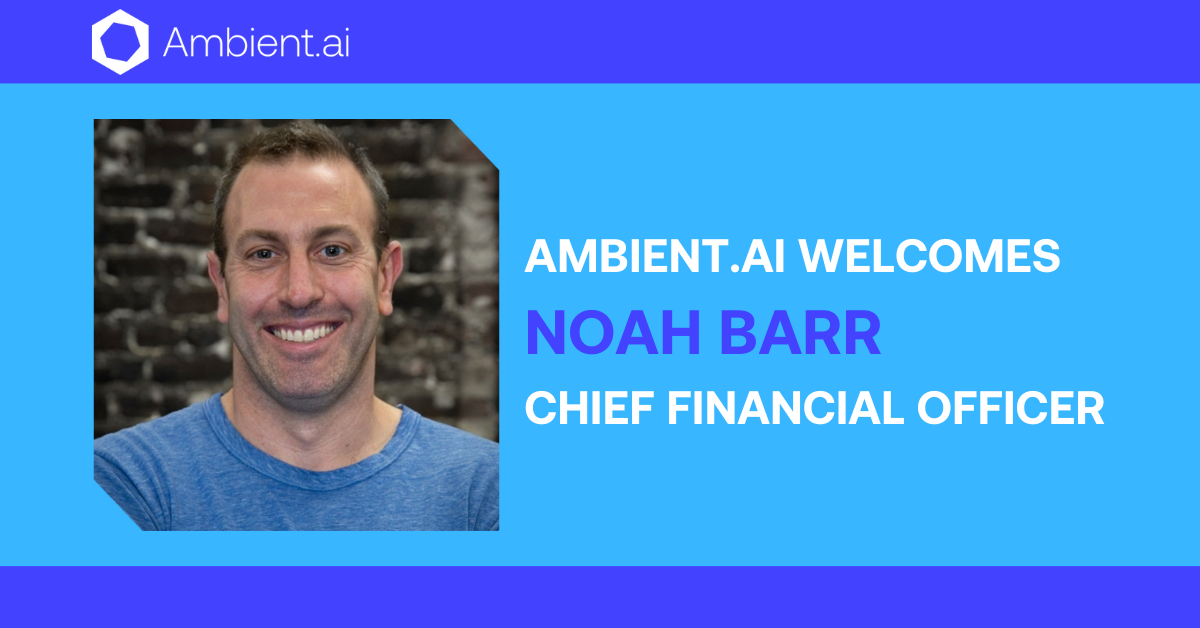Throughout history, our sense of safety and security has always been important basic need for us. It is essential for our overall well-being. Human ingenuity is remarkable, but it only thrives when we feel safe: It allows us to think freely, express ourselves, pursue our passions and lead with curiosity. If you have ever been in an unsafe environment, you will relate to the all-consuming fear it leads to. I was the victim of an armed robbery when I was 12. It made me intimately aware of this all-consuming fear. While traumatic at the time, this experience sparked a drive in me to change things; to learn what we can do to prevent incidents and make environments intrinsically secure.
We have been protecting people, places, and physical assets since the dawn of human existence. Although most of the technological innovation recently has been in cyber security, specifically around preventing data breaches, many of the core ideas – of securing the perimeter, detecting intrusions, setting up access control, conducting risk assessments – all have their roots in physical security operations. We have made tremendous progress in securing our data but not much has changed in how we protect people, places, and physical assets since the early days of electronic physical security (CCTV & Access Control) in the 1900s. Physical security breaches have far-reaching consequences on our life and our well-being. Yet, not much has changed in the last twenty years.
US Enterprises spend ~$120B / year on physical security, with some analysts projecting an increase to $170B by 2027. However, we have very little to show for this spending when it comes to proactive and preventative physical security. We have witnessed the digital transformation of endpoints like cameras and sensors – they are now networked, offer better resolution, have become commoditized and are widely deployed. However, none of that progress has improved our program effectiveness. We have been left with noisy endpoints that stream large amounts of data but little intelligence into what is actually happening and whether an action must be taken. We simply don’t have the tools to respond to real threats.
When you peek behind the curtain and walk into a security operation today, you will find hundreds of cameras streaming video that nobody is watching. You will find thousands of alarm events every day from noisy sensors that take countless hours to manually review – 99%+ of which are not alerting to dispatch-worthy events. You will find security officers patrolling tirelessly, knowing that they simply cannot be everywhere at the same time. The odds of them being where an incident is evolving is nearly zero. We have so many observational data points and yet we are blind. Our best bet in most cases is to wait for the incident to happen and then leverage this data to investigate after-the-fact. News and media are littered with incident videos of what happened. Watching these videos always begs the question – what if someone observed this at the beginning of the event and initiated a response? Would the outcome be different? Could we prevent the event from turning into a full blown incident or mitigate its impact?
In 2017, my co-founder, Vikesh Khanna, and I, set on a path to transform security operations forever with computer vision. We wanted to move organizations from their current reactive state to proactive physical security. Independently, we had almost a decade of research and development experience in AI, machine learning and intelligent systems at Stanford and leading technology companies.
AI technology has a long history of applications for security cameras. I like to think about the impact of AI on physical security in three eras of technology breakthroughs. The first era started with leveraging motion-based detections with shallow feature detectors like HOG and SIFT to detect simple moving objects. The industry called this Video Analytics.
With Deep Learning we made a big leap in our ability to understand images, and also extended it to recognize a wider range of objects and their attributes. This defined the second era of physical security AI applications. Again, the industry called this Video Analytics but now with object and attribute recognition. We were still far from true scene understanding in the way that humans are capable. Humans don’t just detect objects in scenes to understand what is happening. We look at scene elements, human-object interactions, activity and combine that with context around the scene to decipher what is happening.
In 2015, early research in combining deep learning with language models to perform captioning was promising, since, for the first time, it had contextual expressibility. It still lacked specificity to the actual events happening. Work in image-level human activity recognition had specificity to a single activity but it lacked variable attention to different events in a scene. Image-level activity recognition also performed poorly in comparison to the breakthrough results in image recognition that were already reaching human performance. Vikesh and I saw a technology inflection point to build a vision system that can understand contextual patterns of behavior and parallel human performance when monitoring video with computer vision intelligence. This paved the way to build Ambient.ai.
At Ambient.ai, our mission is to prevent every security incident possible while also preserving individual privacy. Embracing privacy by design means that we follow privacy best practices, not just on a product level but also as a cultural value at the company. It guides decision-making processes as well as product design. It defines our company’s policies and priorities. We believe that you can increase security while also preserving individual privacy.
Over the past five years, we have built on top of our initial technology insight. We come out of stealth today with an enterprise class product that a select group of customers has been using for several years.
Multiple significant technology breakthroughs power the Ambient.ai Platform today.
- Threat signatures: In 2017, we built and deployed one of the first vision powered active shooter detection models. Today our platform detects over 100 threat signatures (indicators of compromise) built with computer vision primitives. This library of threat signatures offers protection against a wide range of threat vectors. We are now doubling our threat signature count year after year, thanks to the continued work of our dedicated machine perception and threat intelligence engineering teams.
- Human-in-the-loop feedback: A unique human-in-the-loop feedback system ensures near-zero false alerts to customers while gradually improving signature performance with self-annotated data for the most complex events.
- Video + sensors: Ingesting and processing a combination of both video camera feeds and other sensor endpoints, such as physical access control systems (PACS), enables us to reduce access control alarm noise by up to 93% while also identifying previously undetectable threats.
- The Ambient Context Graph™: This is a graphical threat model that captures the risk profile of a site. It enables an organization to seamlessly deploy 100+ signatures in a matter of minutes, and avoid lengthy calibration and configuration. It makes it easy for us to deliver new signatures over the air so organizations continuously improve their security posture every day.
Most importantly, with 5 of the 10 largest US technology companies and multiple Fortune 500 enterprises securing sites around the world using the Ambient.ai Platform, we have been able to prevent security incidents. We feel honored to partner with these security teams, powering their mission of keeping people safe and enabling them with the tools to do so effectively. It is a unique time in history for our industry. More and more organizations are now thinking about security more holistically, across the entire cyber-physical attack surface and we expect that trend to continue.
At this point you are probably wondering why this matters to you. While most of us may not care about the software infrastructure that an organization uses in their information technology stack, what they do for their physical security affects us all. When you are at work in an office building. When you are sitting in a hospital waiting room. When your kids are at school or college campuses. While your family is waiting for a train at the mass-transit station. In all of these scenarios, effective and proactive physical security matters. It is time to rethink our standard of care with every passing incident.
Could we have done something better and leverage what technology now enables to prevent the incident?
We are excited to launch Ambient.ai out of stealth and further enable incident prevention at a much larger scale. We are launching with a mission-driven team committed to delivering breakthroughs, an experienced leadership team, and a large and growing roster of customers and partners. We are also announcing over $52M in venture capital raised to date across our Series A and B rounds. This funding was led by Andreessen Horowitz. Martin Casado, who has joined our board, couldn’t be more passionate about this space. It has been a pleasure partnering with both him and David George to fuel the growth of the business. We have also received funding from visionary enterprise technologists that believe in our product, our team and our mission. They include Jyoti Bansal (Founder/CEO of Appdynamics), George Kurtz (Founder/CEO of Crowdstrike), Frederic Kerrest (Founder/COO of OKTA), Mark Leslie (ex-CEO of Veritas) and several others that are committed to the transformative power of the Ambient.ai Platform.
For all the bold and breakthrough thinkers out there who believe in the importance of our mission – we’re hiring across the entire organization in product, engineering, sales, customer success, and marketing. To my security practitioner colleagues – if you’d like to explore how computer vision intelligence can enable a proactive security operation and support your mission to keep people safe, please reach out as we would love to talk to you! We are here to help you deliver better security outcomes for us all.
Onward!












